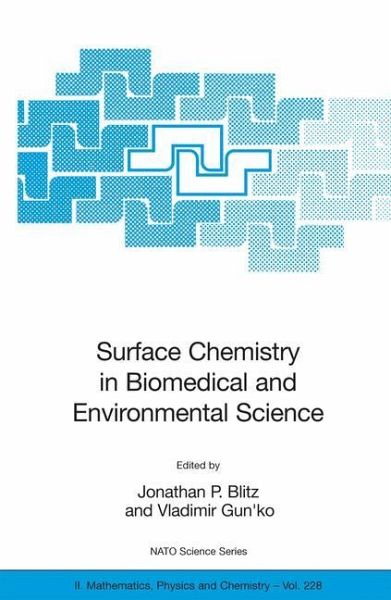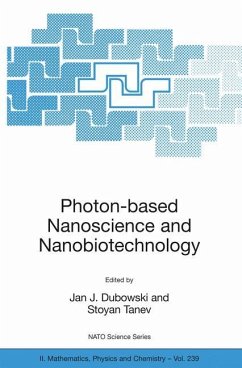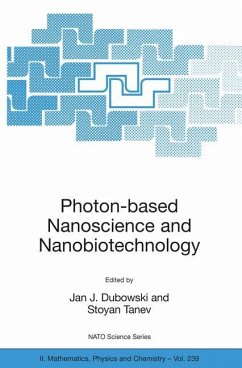
Surface Chemistry in Biomedical and Environmental Science
Versandkostenfrei!
Versandfertig in 6-10 Tagen
113,99 €
inkl. MwSt.
Weitere Ausgaben:

PAYBACK Punkte
57 °P sammeln!
In September 2005 a NATO Advanced Research Workshop convened in Kiev to discuss the current state of the art in surface chemistry and nanomaterials research, with a view towards biomedical and environmental applications. This volume represents the fine work presented at this workshop, consisting of a unique mixture of reviews as well as primary research articles from leading laboratories in Eastern and Western Europe as well as the US.A common theme throughout much of this volume involves adsorption and interfacial behavior of nanomaterials including core-shell particles, nanoparticles derived...
In September 2005 a NATO Advanced Research Workshop convened in Kiev to discuss the current state of the art in surface chemistry and nanomaterials research, with a view towards biomedical and environmental applications. This volume represents the fine work presented at this workshop, consisting of a unique mixture of reviews as well as primary research articles from leading laboratories in Eastern and Western Europe as well as the US.
A common theme throughout much of this volume involves adsorption and interfacial behavior of nanomaterials including core-shell particles, nanoparticles derived from oxides, mixed oxides, carbon, carbon/oxide hybrids, functionalized nanoparticles, polymeric biomaterials, and more. The behavior and design of these nanomaterials for adsorption (or sometimes the lack thereof) of toxins, pollutants, narcotics, warfare agents and various biomolecules are studied with a mix of experimental and theoretical approaches. This volume holds a special niche in describing the current state of the art in the fundamentals and applications of a variety of nanomaterials.
A common theme throughout much of this volume involves adsorption and interfacial behavior of nanomaterials including core-shell particles, nanoparticles derived from oxides, mixed oxides, carbon, carbon/oxide hybrids, functionalized nanoparticles, polymeric biomaterials, and more. The behavior and design of these nanomaterials for adsorption (or sometimes the lack thereof) of toxins, pollutants, narcotics, warfare agents and various biomolecules are studied with a mix of experimental and theoretical approaches. This volume holds a special niche in describing the current state of the art in the fundamentals and applications of a variety of nanomaterials.














